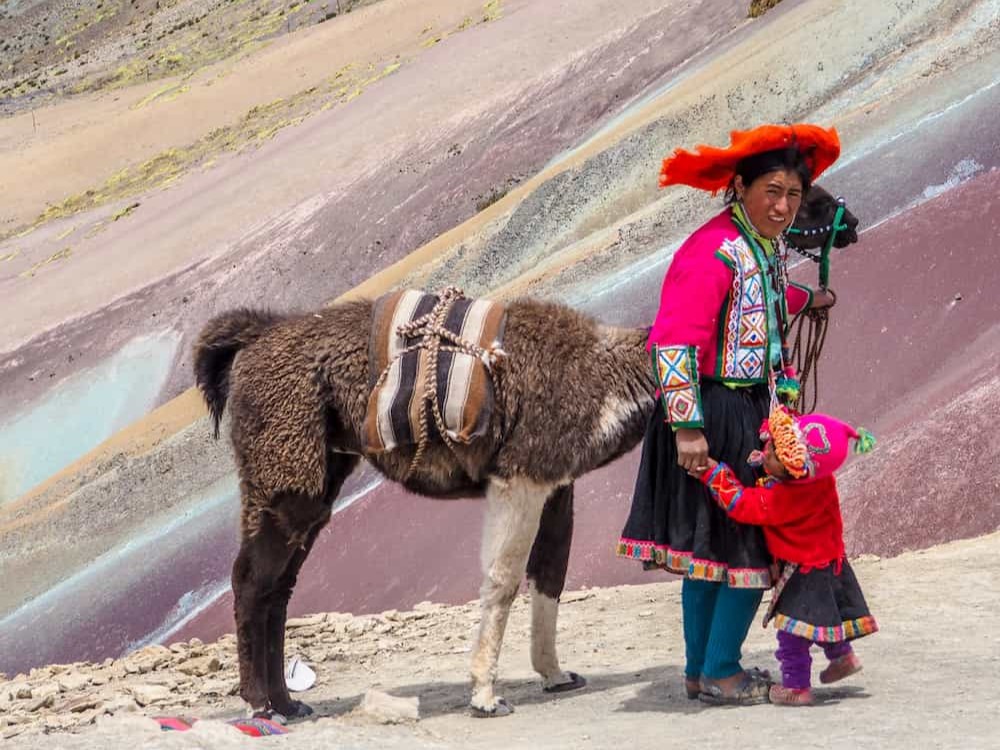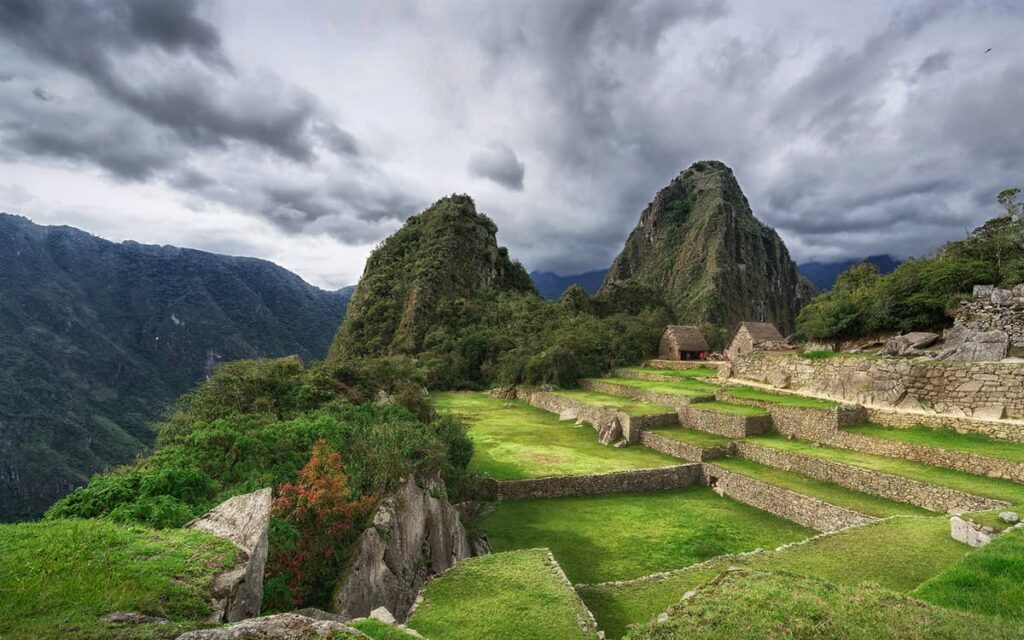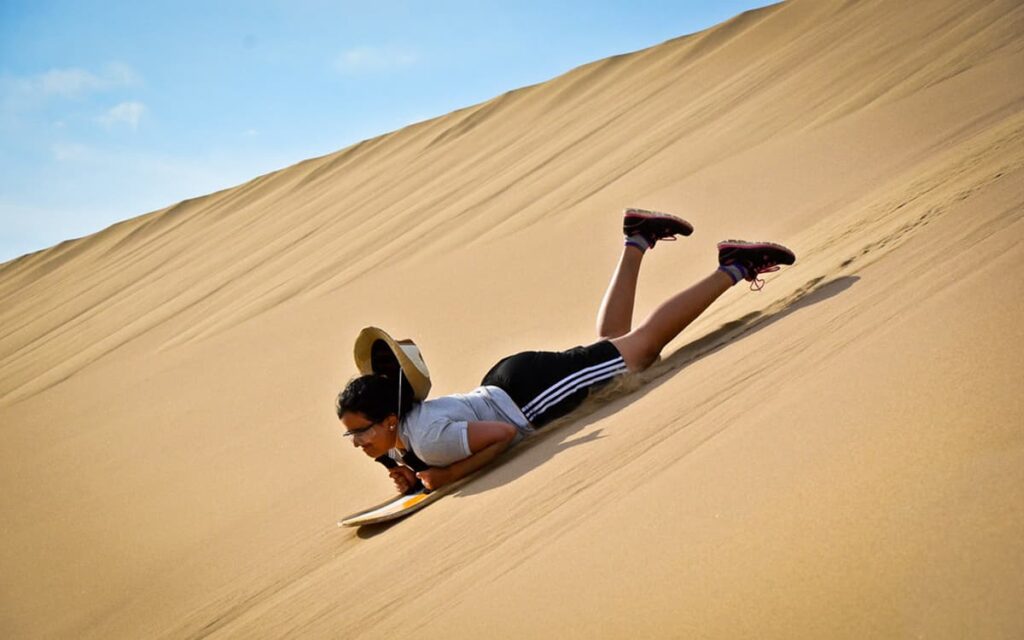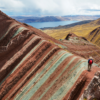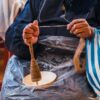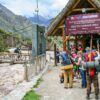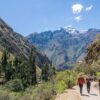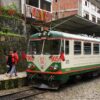Amazonas is the cradle of one of the most important cultures in Peru: the Chachapoyas. There, nestled at the top of a mountain of rugged geography is Kuélap, an imposing stone building protected by a wall of up to 20 meters which, until recently, was only accessed by walking.
Today, it can be reached in 20 minutes thanks to modern cable cars that depart from Nuevo Tingo.
For adventure lovers, however, the hike will be irresistible.
It is possible that its name, Kuelap, derives from the deformation of the word «Cónlap», which is the name of a town that inhabited that region according to Spanish colonial documents dated in 1591.
Geographic location
Kuelap Fortress is located in the upper part of the valley of the Utcubamba River, near the village of Kuelap in the district of Tingo, Luya Province, Amazonas Department (Peru) at 3000 m.a.s.l. As a reference, it is possible to cite being 35 kilometers south of the modern city of Chachapoyas. The climate is warm during the day (26 to 35 degrees Celsius) and cool at night with periods of rain during the months of December to April.
Discovery
This monumental exponent of the architecture of the Chachapoyas remained virtually ignored until 1843. The reason lies in the inaccessibility of the area, which is wooded and subject to permanent rains. However, on January 31 of the referred year, when conducting a diligence in the area, Juan Crisóstomo Nieto, judge of Chachapoyas, was able to admire its greatness, guided by locals who already knew the archaeological site. This fact can be considered as Kuelap’s «discovery.»
Later, Kuelap in Chachapoyas deserved the attention of some scholars and curious people in the matter of antiquities. Among them the Frenchman Louis Langlois, who analyzed it in the 1930s, and Adolf Bandelier, who described it previously, stands out. However, it was the Peruvian archaeologist and historian Federico Kauffmann Doig who dedicated the most time to the study and investigation of the site and the Chachapoyas culture.
Description
Kuelap Fortress is formed by two gigantic superimposed artificial platforms, on which a city was built that covers an area of ??approximately 450 hectares. In general, and seen from the air, its shape resembles an elongated bird’s wing facing north – south with approximate measurements of 584 meters long by 120 meters wide on average. According to some specialists in its construction, 25,000,000 cubic meters of material would have been used.
The retaining walls that form the aforementioned platforms give the impression of being a gigantic wall that protects this site since in some stretches it reaches 30 meters in height, an impression reinforced, in addition, by the presence of architectural elements identified as guard posts. , a tower and three narrow entrances, two of them oriented towards the east and the third towards the west. The aforementioned entrances are long ramps dug into the interior of the platforms that have the peculiarity of having a funnel shape, with an initial width of 3 meters on the outside, gradually narrowing down to 70 centimeters in the interior exit, thus forcing the entry of only one person at a time, which has been understood as a measure of control and defense.
Within its «walls», Kuelap houses 505 houses, most of them circular. Outside the city, at least 198 more homes were built, totaling more than 700 buildings.
Kuelap in Chachapoyas can be considered as a fortified city because it is built on high platforms with high stone walls and narrow accesses. Its interior is divided into two large sectors, one low and the other high, which correspond to the two platforms that form it, where most of the houses are located, which are organized around patios. The upper sector is the smallest and contains the best-built houses and has therefore been considered as the dwelling area of ??the Kuelap aristocracy.
Kuelap is the archaeological complex of greatest significance for the Chachapoyas, built since the 6th century AD. and discovered in 1843, it impresses its stone walls up to 20 meters high. Other impressive routes in Peru include the inca trail to machu picchu, the salkantay trek 4 days, and the choquequirao trek peru, that also takes you to visit archaeological places in Perú.
Architecture
The main material for construction in Kuelap Fortress are unpolished edged limestone blocks, which have different qualities of finishes, the most elaborate being those for ceremonial constructions.
Limestone blocks were the main material used for construction.
Main access
The main entrance attests its use for high-status characters, not only for its shape and architectural details, but also for the location of numerous stone blocks in its construction that were ornamented with various religious symbols that include faces and mythical animals. , snakes and symbols of deep religious content. In this access the testimonies of the growth process of the site have been kept, including large layers of filling that successively allowed the extension of the access, both in height and its growth towards the interior.
Main temple
The Main Temple is one of the most important sacred centers for the monument. This building, in the shape of an inverted truncated cone, is 13.5 m in diameter in its upper part, in which numerous evidences of diverse offerings have been recorded in complex rituals that included placing human bones inside the inner container, which became thus in a large ossuary. Around the building, various human burials and offerings have been found that come from the north coast, such as from the Sierra de Ayacucho in the south and Cajamarca in the northern sierra.
Circular platform
The Circular Platform, located immediately on the southern wall of the site, had a function closely linked to the Templo Mayor. The person who was responsible for the operation of the temple must have resided on this platform. The end of Cuélap’s occupational history is related to a massacre of great proportions that occurred exclusively within the limits of this platform, which did not include women, but was carried out by a well-organized local group, within the framework of a conflict for power. This event was followed by a large fire that marks the final days of occupation of the site. Such a sad event must have occurred around 1570, when the system of Indian reductions was established by the Spanish colonial power. In the center of this platform there was an ossuary similar to the one recorded in the upper and central part of the Templo Mayor.
High Town
El High Town is located in the northern and western part of the site and has a wall that delimits it and separates it from the rest of the settlement. It has three well-defined sectors, which are accessed from two places, one that allows access to the north and central sectors and the other that allows access only to the southern sector, which is basically residential.
The Inca Tomb of the Alto Sur People
Inside a special structure, an Inca tomb of an adolescent character was discovered, with high-quality offerings, including fine ceramics, heavily destroyed wooden objects, and a metal nose ring. It is possible that it is an offering of the Capacocha type, an Inca custom in the most important religious centers of the empire.
Central Sector of Pueblo Alto
This sector had to fulfill a public function during the last moments of occupation. For this reason, there are only three structures of square and rectangular shapes, from the Inca period, which are superimposed on older circular structures. At the southern end of this sector, a very destroyed quadrangular structure is located, which contained numerous primary and secondary human burials. This building must have had a gabled or hipped roof. Below it is evidence of older buildings.
Callanca
This is a building from the Inca period. It is the largest of the site, it is rectangular in shape and its function as Callanca has been proposed, a building that served during Inca times for ceremonial purposes indoors, but also as accommodation for travelers or guests.
The Tower
Solid building of a ceremonial type located at the northern end of the site, it is part of the northern sector of Pueblo Alto and borders an inaccessible abyss to the west side. In the upper part there were hundreds of limestone stones that were rounded to be used as sling projectiles, which must have been used for ceremonial purposes, since for defensive purposes they did not fulfill a significant role. If slings were used, the upper space should only have allowed the presence of very few people, perhaps a single one who was throwing them to the west, since to the east, the roofs of neighboring houses impeded visibility.
How to get to Kuélap?
Now, maybe you are asking How to get to Kuélap? Well, to get to the Kuelap Fortress, it is convenient to start from the city of Chachapoyas. From Lima to Chachapoyas, the redBus ticket has a cost that varies between 80 and 130 soles, depending on the transport company chosen. The journey takes between 21 and 24 hours maximum.
There is more than one option to get to Kuélap. Here we present them:
1. Hike from Nuevo Tingo
One of the favorites by travelers. It is part of the Nuevo Tingo district, located in the province of Luya. The journey can be done on foot in a three-hour walk, or by car in a journey that takes approximately 90 minutes. Getting to Nuevo Tingo costs you 8 soles if you depart from the Chachapoyas Terrestrial Terminal.
2. Cable cars
Since the beginning of 2017, the cable cars that transport tourists to Kuélap in just 20 minutes have been fully operational. They are in Nuevo Tingo.
The cable car system is perfect for those who wish to save time on their trip and prioritize their comfort. There are 26 cable cars with space for eight passengers each, which were created to promote tourism in the department of Amazonas, since Kuélap is one of its flagship attractions.
The cable car ticket, which has a price of 20 soles (round trip). Transportation to the departure lounge is included in the payment (the journey takes 10 minutes). From the departure platform, reaching the Kuélap Fortress takes only 20 minutes.
Entry
General admission to enter Kuelap Ruins costs 20 soles for the general public and 10 soles with a student card. The tour takes approximately 2 hours.
The gondola boarding station has two levels for the reception of tourists. It has administrative and service environments, an elevator for disabled people, a cafeteria, parking, among other spaces.
The cable car ride is approximately 4 kilometers.
3. Rafting and Cycling Route to Kuélap
This is one of the best known routes to reach this wonder, although it requires good physical condition and, of course, love for the challenges that nature presents. It takes two days and involves activities such as trekking, canoeing, and mountain biking. You need a specialized service agency that provides guides who know the route and security experts.
Day 1
The route begins in the city of Chachapoyas and continues through the entrances of the Utcubamba River. With the correct guide, you can go canoeing (of moderate difficulty) on the river until you reach the Milpuj private conservation area. There you can find delicious typical dishes and then travel over a thousand hectares of natural forests, with incredible trails surrounded by dry forests.
Day 2
From very early, a hike is made to Huiquilla, another very extensive private conservation area, ideal for mountain biking and bird watching. In Huiquilla there is a great diversity of flora and fauna, including species that are in danger of extinction. It is located one hour (on average) from the Kuélap Fortress.
The Route of Nuevo Tingo
It is divided into two ways: The first is very arduous, with a walk of approximately 3 hours if you have experience in difficult trekking routes (otherwise it would take more than 6 hours). It is not recommended if you are not in very good condition and physical resistance.
First you have to go by bus or taxi from the city of Chachapoyas to the district of Nuevo Tingo (they charge a maximum of 8 soles). From there, the trekking route starts on a very steep slope and at 3,000 meters above sea level.
Here you must be very careful with the footsteps to avoid any fall, especially on the way back as it will be a difficult descent.
The other way to get there is to take a taxi in the city of Chachapoyas to the main road to get to Kuélap. The journey takes about 90 minutes and then continues with a very gentle walk of 15 minutes until you reach the fortress.
The best thing is to request a tour in a tourist agency (whose average cost is around 60 soles) to make this short tour. Includes transportation (round trip), lunch and guide.
Recomendations:
The best season to visit Kuelap Ruins is between the months of April and October as the rains decrease. The climate is mild during the day and cold at night, all year round.
The Chachapoyas Tourist Week (from June 1 to 7), the Patronal Festival of the Virgen de Asunta (from August 7 to 15) or the Patronal Festival of the Lord of Gualamita (from September 10 to 15), are also dates ideal for getting to know this region, for the various activities that are generated during the celebrations.
To visit the Kuelap Ruins it is important to separate a whole day from the itinerary, in addition to hiring a tourism agency to have a specialized guide in the area and learn more about this wonder and its surroundings.
Remember that it is important to acclimatize due to the altitude. You can also take some anti-soroche pills before going up to the fortress.
5 free tourist attractions of Chachapoyas
Although Kuelap is the most important in Chachapoyas, there are other beautiful attractions that complement the trip to this city. For example:
- The Valle Huaylla Belén, called the Silver Serpent because of the shape of its fields and river. It is located in the province of Luya and is home to a great diversity of birds.
- The Pongo de Rentema Tourist Complex, located north of Chachapoyas and with access only 15 minutes from Bagua. This complex is made up of the Pongo hot springs, the Fidillas hill (paleontological zone) and the archaeological remains of Tompende.
- The pre-Hispanic Chachapoyas-Levanto Road. It was built by the Chachapoyas culture and from there you can see landscapes, cultivation areas and ancient centers of worship. This road begins at km 48 of the Pedro Ruíz road (almost on the border with the department of San Martín).
- El Pozo de Yanayacu, located in the last block of Jirón Salamanca, 10 minutes from the Plaza de Armas de Chachapoyas.
- Gilberto Tenorio Ruiz’s traveling exhibition room, which was inaugurated in the middle of 2000. There are abundant archaeological pieces from the Amazon region exhibited and it is located in Jirón Ayacucho 904, Chachapoyas.
Where to eat and stay?
Chachapoyas works as a starting point to many of the tourist destinations in the Amazon. Therefore, it is important to choose a hotel there to sleep in if the plan is to visit more than one tourist destination or stay for several days.
The most recommended places in the economic category (cheap, but that meet the requirements to spend a pleasant night) are the Hostal Amazonas (founded 100 years ago in front of the Plaza de Armas) and the Hotel la Fortaleza (on Calle 2 May 1 minute from the Plaza de Armas).
If the budget allows it, the most recommended is the Hotel La Casona Monsante, a premium category. It is located in the Casa Monsante, considered a Cultural Heritage of the city.
For the food there is no concern. The gastronomy is exquisite and good restaurants abound. Some of the typical dishes to try are the yucca and cecina juanes, the purtumute, the casserole and typical drinks such as guarapo, chuchuhuasi and milk liquor. The most renowned restaurants are the Batán de Tayta, Amazonas 632, La Tusha and El Tejado.

